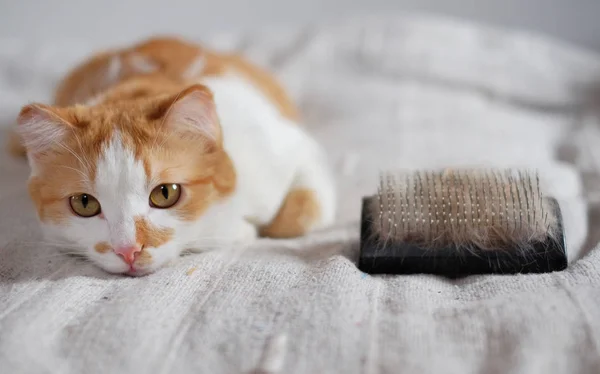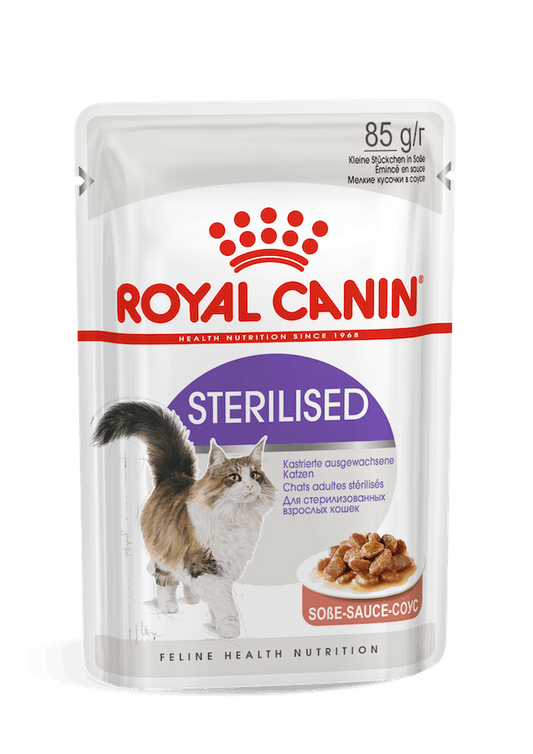It is estimated that around 35% of cats get hairballs. Trichobezoar is the medical or scientific term that is used to describe a hairball. The word “trich” means hair, while a bezoar is any foreign matter that obstructs the stomach or intestines. Therefore, a trichobezoar is a gastrointestinal obstruction caused by hair.
Cats are constantly ingesting small amounts of hair as they groom themselves. This hair cannot be digested, as it is mainly made of keratin, a fibrous undigestible protein. Normally, the hair passes through the intestinal tract and is expelled in the faeces. However, hair may become tangled and knotted on itself or other matter within the stomach or intestines and accumulate. If this happens then the only way to get rid of it is by vomiting it up.
Hairballs can be more common in cats with underlying gastrointestinal disease. These cats may have altered gastrointestinal motility that limits the movement of hair through the digestive tract. Additionally, cats with itchy skin disease may be more prone to hairballs, due to more vigorous licking at their skin and coat.
Cats will usually vomit a hairball every week or two, and it will be preceded by retching or hacking sounds. They are generally a couple of centimeters long and cylindrical. They will usually be the colour of the cat’s fur, maybe a little darker, owing to the food and gastric secretions they are mixed with.
Long-haired cats, such as Persians and Maine Coons, are more susceptible to hairballs simply because they have more hair than their short-haired friends. Hairballs may be more common in warmer weather also, as all cats tend to shed their heavier winter coats.
Hairballs are not generally a sign of ill health, they are a normal way for cats to get rid of excess hair. However, if they occur very frequently or if you see or hear your cat retching, vomiting, or coughing without the eventual appearance of a hairball, you should talk to your veterinarian. Other signs that hairballs might be a health issue include constipation, an excessive amount of hair in stools, a loss of appetite, and lethargy.
Your vet might advise an ultrasound or take x-rays to make sure there are no blockages. If a blockage is found, a laxative may be sufficient to move it on, although in severe cases, surgery to remove the offending hairball may be the only option.
There are a number of strategies that have been used to prevent hairballs in cats. Any underlying skin disease and gastrointestinal disease should be first addressed by your vet. You should regularly groom your cat to reduce shedding, especially if they have long hair. This will help remove any loose hair before it gets ingested. Grooming is also a nice way to spend time interacting with your cat and something many cats enjoy.
ROYAL CANIN® has a range of anti-hairball diets. These include Hairball Care and Indoor Long Hair are composed of a specific blend of dietary fibres, including psyllium (rich in mucilage) and insoluble fibres to help naturally stimulate healthy intestinal transit. As a result, hair swallowed daily can be eliminated in faeces rather than building up in the stomach and being regurgitated.
ROYAL CANIN® Hairball Care has been proven to eliminate twice as much excess hair in a cat’s body after just 14 days of feeding. To cater to each cat’s individual preferences, ROYAL CANIN® Hairball Care is also available as wet food in delicious gravy. If you are considering mixed feeding, simply follow our feeding guidelines to ensure your cat gets an accurate amount of both wet and dry food for optimal benefit.
Hairballs are not something you and your cat need to suffer; regular brushing and feeding a high-quality hairball specific food that will keep the hair moving naturally through her digestive system will help eliminate the issue.






